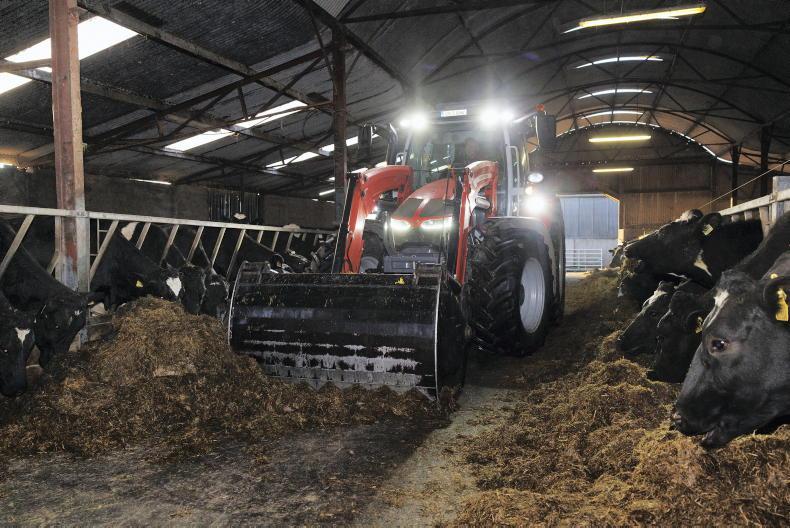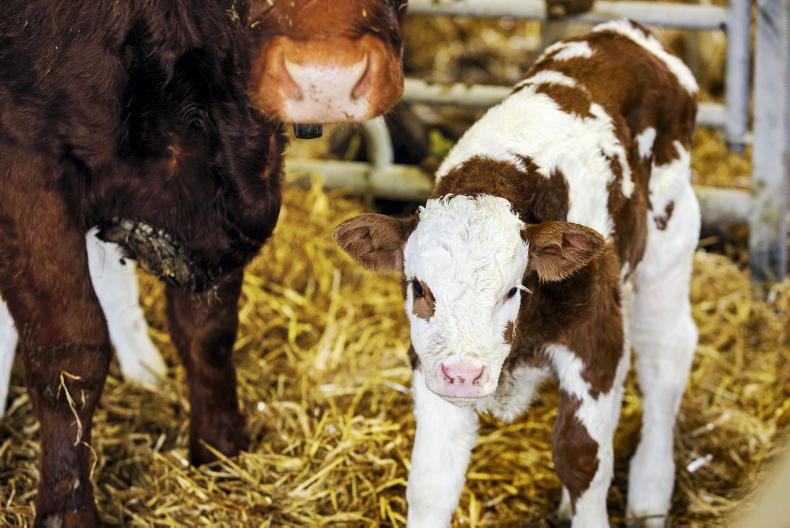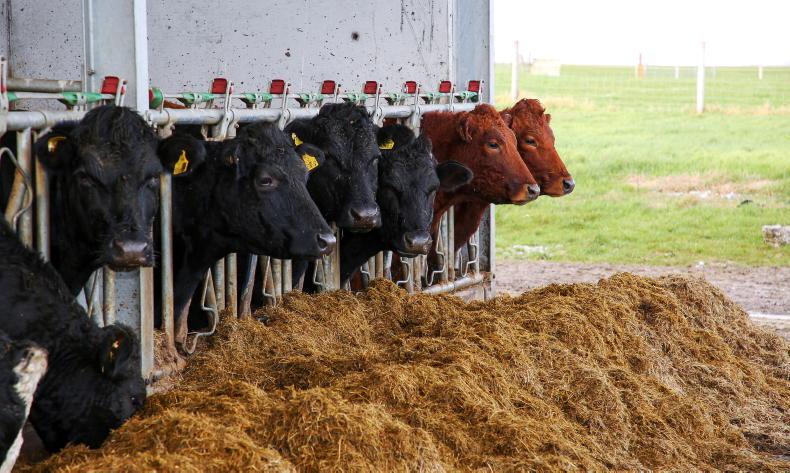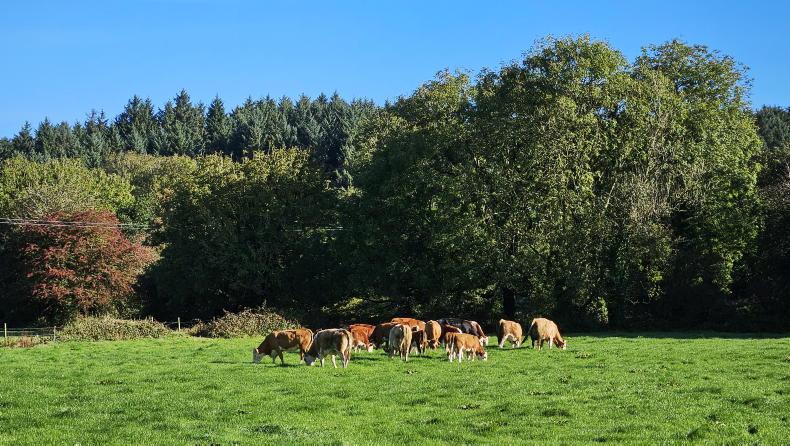Autumn calving gets under way in August on many suckler farms.
Before the next calf crop hits the ground, take steps to make proper preparations.
Outlined are five things to tick off the list of jobs in the run-up to calving time.
1. Wash out calving sheds, make alterations and set up pens
Make sure calving pens are clean and ready for use. Leave sheds to air dry, then spray a disinfectant or hydrated lime. If calving gates need adjusting, then sort these issues now.
If necessary, upgrade lighting in the calving shed, as there will be cows that calve after dark needing assistance. LEDs will significantly improve visibility in calving sheds.
In sheds where temporary pens are used to allow cows and newborn calves bond for 24 to 48 hours, erect as many of these pens now as possible.
2. Stock up on calving basics
Purchase arm-length and hand gloves for intervening at calving time and store them in a clean, safe location in the calving shed.
Stock up on other essentials such as iodine, calcium, colostrum, electrolytes, calving lubricants and some pain relief, as well as a good antibiotic. Don’t forget to order ear tags as well.
3. Calving jack and ropes
Locate the calving jack now, then wash and sterilise. Check the headstock is rotating freely and that the ratchet is in full working order.
Leave the jack in the calving shed so that it can be easily located in the event of an emergency. Remember, you may not be about when a cow needs assistance.
Storing the jack, and other aids, in the calving shed means other family members and neighbours can step in to assist a cow in an emergency.
Check the calving ropes are also clean and soft, then hang on the jack. If the ropes are hard, soiled or frayed, discard them and replace with new ones.
Hard and frayed ropes will irritate the cow internally once pressure is applied from the jack. They will also be abrasive to the calf’s skin.
4. Keep a separate stomach tube for sick calves
Ideally, every suckler farm should have two stomach tubes. Keep one separate for use on healthy calves, with the other used on sick animals only.
Mark each tube with their intended use with a permanent marker.
Do not use the same tube on sick and healthy calves, as this only transmits disease to a newborn animal, often before it has had colostrum.
5. Keeping cows next to the yard
Grazing cows in paddocks next to the yard is good practice, as it is easier to monitor them and move animals needing assistance into a handling pen.
Depending on the set-up, there is also merit in feeding pre-calving minerals in a trough on a laneway or collecting pen.
That should make it easier to bring cows in when assistance is required. It is also a safer way to bring newborn calves in for tagging and treating navals.
Read more
Beef Management : fodder budgets, breeding and autumn reseeding
Improved growth may allow for sward quality correction
Autumn calving gets under way in August on many suckler farms.
Before the next calf crop hits the ground, take steps to make proper preparations.
Outlined are five things to tick off the list of jobs in the run-up to calving time.
1. Wash out calving sheds, make alterations and set up pens
Make sure calving pens are clean and ready for use. Leave sheds to air dry, then spray a disinfectant or hydrated lime. If calving gates need adjusting, then sort these issues now.
If necessary, upgrade lighting in the calving shed, as there will be cows that calve after dark needing assistance. LEDs will significantly improve visibility in calving sheds.
In sheds where temporary pens are used to allow cows and newborn calves bond for 24 to 48 hours, erect as many of these pens now as possible.
2. Stock up on calving basics
Purchase arm-length and hand gloves for intervening at calving time and store them in a clean, safe location in the calving shed.
Stock up on other essentials such as iodine, calcium, colostrum, electrolytes, calving lubricants and some pain relief, as well as a good antibiotic. Don’t forget to order ear tags as well.
3. Calving jack and ropes
Locate the calving jack now, then wash and sterilise. Check the headstock is rotating freely and that the ratchet is in full working order.
Leave the jack in the calving shed so that it can be easily located in the event of an emergency. Remember, you may not be about when a cow needs assistance.
Storing the jack, and other aids, in the calving shed means other family members and neighbours can step in to assist a cow in an emergency.
Check the calving ropes are also clean and soft, then hang on the jack. If the ropes are hard, soiled or frayed, discard them and replace with new ones.
Hard and frayed ropes will irritate the cow internally once pressure is applied from the jack. They will also be abrasive to the calf’s skin.
4. Keep a separate stomach tube for sick calves
Ideally, every suckler farm should have two stomach tubes. Keep one separate for use on healthy calves, with the other used on sick animals only.
Mark each tube with their intended use with a permanent marker.
Do not use the same tube on sick and healthy calves, as this only transmits disease to a newborn animal, often before it has had colostrum.
5. Keeping cows next to the yard
Grazing cows in paddocks next to the yard is good practice, as it is easier to monitor them and move animals needing assistance into a handling pen.
Depending on the set-up, there is also merit in feeding pre-calving minerals in a trough on a laneway or collecting pen.
That should make it easier to bring cows in when assistance is required. It is also a safer way to bring newborn calves in for tagging and treating navals.
Read more
Beef Management : fodder budgets, breeding and autumn reseeding
Improved growth may allow for sward quality correction









SHARING OPTIONS